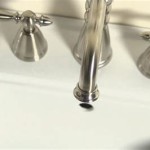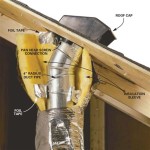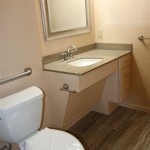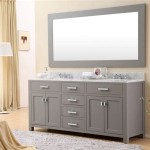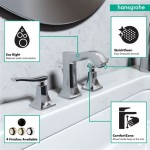How To Get Ventilation In A Bathroom Without Windows
Bathrooms are naturally humid environments due to showers, baths, and general use. This humidity, if not adequately addressed, can lead to problems like mold growth, mildew, and unpleasant odours. While windows provide a natural source of ventilation, many bathrooms lack this feature. Fortunately, numerous strategies can effectively ventilate a windowless bathroom, ensuring a healthy and comfortable space.
1. Exhaust Fans: The Essential Foundation
An exhaust fan is the cornerstone of ventilation in any bathroom, especially those without windows. These fans efficiently remove moist air and odours from the room, preventing them from lingering and creating problems. When selecting an exhaust fan, consider the following factors:
- Size: The fan’s size should be proportionate to the bathroom’s volume. A general rule of thumb is to choose a fan with a cubic feet per minute (CFM) rating of 1 CFM per square foot of bathroom area.
- Sound Level: Opt for a fan with a low decibel rating to minimize noise levels. Many modern fans offer quiet operation, ensuring minimal disruption to the household.
- Features: Look for features like timer settings, humidity sensors, and adjustable speed settings for greater control and efficiency.
Proper installation is crucial for exhaust fan effectiveness. The fan should be directly above the shower or bathtub, allowing it to capture the most humid air. Ensure the fan is connected to a vent leading outside, and the vent is properly sealed to prevent air leakage.
2. Vent Placement and Ducting: Maximizing Airflow
Strategic vent placement and proper ducting play a significant role in maximizing exhaust fan efficiency. When possible, position the vent directly outside the bathroom, minimizing the distance the moist air must travel. If an external vent is not feasible, consider a vent leading to a hallway or another room with a window for natural air circulation.
Ducting material and length also impact ventilation. Opt for smooth, rigid ductwork that minimizes friction and restricts airflow. Shorter duct lengths are generally preferable, as they reduce air resistance. If longer runs are inevitable, use larger diameter ductwork to compensate for the increased distance.
3. Continuous Ventilation: Keeping The Air Fresh
Continuous ventilation, even when the bathroom isn’t in use, is crucial for preventing humidity buildup. Consider these strategies to maintain fresh air circulation:
- Timer Settings: Many exhaust fans offer timer settings that allow the fan to run for a predetermined duration after use. This can help remove residual moisture and odours, even after the bathroom is vacated.
- Humidity Sensors: Some advanced fans include humidity sensors that automatically activate the fan when humidity levels reach a certain threshold. This ensures continuous ventilation only when needed, optimizing energy efficiency.
- Low-Speed Operation: If your fan allows adjustable speed settings, consider running it on a low setting during periods of low humidity to maintain continuous ventilation.
Beyond ventilation, simple measures like leaving the bathroom door slightly ajar after use can help promote natural air circulation, aiding in moisture removal.
4. Alternative Ventilation Solutions: When Fans Aren't Enough
In situations where exhaust fans alone are insufficient or impractical, alternative ventilation solutions can be considered:
- Air Purifiers: While not designed specifically for humidity control, air purifiers can help remove airborne particles, odors, and toxins, contributing to a more pleasant and healthier bathroom environment.
- Dehumidifiers: These appliances effectively remove excess moisture from the air, combating humidity buildup and reducing the risk of mold and mildew growth. Consider using a dehumidifier in combination with an exhaust fan for maximum effectiveness.
- Mechanical Ventilation Systems: For larger bathrooms or those with significant humidity issues, a mechanical ventilation system might be necessary. These systems typically use a network of ducts and fans to provide comprehensive air exchange, ensuring consistent ventilation throughout the space.
Choosing the right ventilation strategy depends on the specific needs of your bathroom and budget. Consulting with a qualified HVAC professional can provide expert advice and ensure proper installation and maintenance of your chosen ventilation system.

How To Properly Ventilate A Bathroom Without Window

No Bathroom Window Problem 6 Tricks To Keep Your Room Fresh Homify

How To Ventilate A Bathroom Without Windows

How To Vent A Bathroom Without Window Tips Tricks Home For Relax

How To Brighten Up A Bathroom Without Windows By Mira Showers

How To Vent A Bathroom With No Outside Access

Ventilation For Bathrooms Without Windows घर क अ दर ब च व ल थर म स द

How Do You Air Out A Bathroom Without Window Victoriaplum Com
How To Ventilate A Bathroom Without Windows

Effective Ventilation
Related Posts
